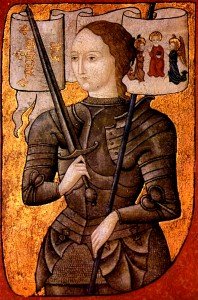 During his life, Brigham Young was among the most hated and feared men. Even some of those who supported him didn’t always get along with his irascible personality. National newspapers often portrayed him as a portly womanizer on the verge of destroying the progress of a modernizing civilization. International opinion agreed, although they saw him as the result of an upstart and untamed United States. The Mormons, along with Brigham Young, were seen as a force to be reckoned with or an unspecified moral doom would be the result. Many generations later he is still mocked and derided with the same images started in Eastern newspapers. Among current Mormons his image is rough, but strong as his statues in Utah. Both believers and detractors have made him into an legendary icon of opposing saint and sinner visions.
During his life, Brigham Young was among the most hated and feared men. Even some of those who supported him didn’t always get along with his irascible personality. National newspapers often portrayed him as a portly womanizer on the verge of destroying the progress of a modernizing civilization. International opinion agreed, although they saw him as the result of an upstart and untamed United States. The Mormons, along with Brigham Young, were seen as a force to be reckoned with or an unspecified moral doom would be the result. Many generations later he is still mocked and derided with the same images started in Eastern newspapers. Among current Mormons his image is rough, but strong as his statues in Utah. Both believers and detractors have made him into an legendary icon of opposing saint and sinner visions.
The biographer John G. Turner hoped with his book to slice through the competing images of a man who was either a hero who built half the Western U.S., or committed every crime imaginable. Like most things Mormon it wouldn’t be an easy task. Turner believed Stanley P. Hirshson’s The Lion of the Lord relied too heavily on Eastern newspaper accounts, and Leonard J. Arrington’s Brigham Young: American Moses slanted too positive as a loyal follower of the religion. He wanted to use more first hand accounts and reminiscences to build a better biography that accepted both the good and the bad about the man. With some reservations the book succeeded.
Stylistically it reads almost like a companion to Richard L. Bushman’s Joseph Smith: Rough Stone Rolling by giving the participants benefit of the doubt through their own words. Nothing seems to have been written to try and undermine or explain away spiritual experiences. There are some differences in subject treatment. Turner doesn’t focus as much on the theological developments and teachings, except where there is a direct connection to events. He uses theology to try and understand why Brigham Young or his followers behaved a certain way, while Bushman sometimes went off on a theological or philosophical tangent. In no way does this take away from the whole of the book, but sometimes it can feel like unexplored gaps remain. Considering that the biographer is a non-Mormon it probably is for the best. Even if he has a decent and mostly unobjectionable understanding of Mormon theology. Very few Mormon readers should be offended by doctrinal treatments, although certainly have a few disagreements with interpretations. Continue reading

 All over the Internet has been talk of gun control and the current President’s executive order to extend background checks for those selling firearms. He and his supporters believe that too many guns have created a deadly culture of violence. Counter arguments have sprung up that all the crimes used to back laws for more gun restrictions would not have been avoided. No lives would have been saved by
All over the Internet has been talk of gun control and the current President’s executive order to extend background checks for those selling firearms. He and his supporters believe that too many guns have created a deadly culture of violence. Counter arguments have sprung up that all the crimes used to back laws for more gun restrictions would not have been avoided. No lives would have been saved by 
